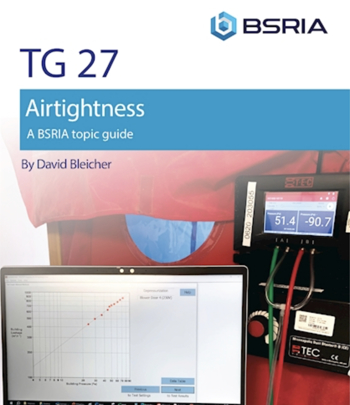Hoist
Contents |
[edit] Introduction
Hoists are used on construction sites to vertically transport materials and/or passengers. They are most commonly powered by diesel engines or electric motors that rotate a drum around which a wire rope is wound. Hoists may also be hydraulically powered, and may use chains as the lifting mechanism rather than wire rope.
The landing area must be fitted with some form of guard, usually sliding gates, and the base of the hoist, where the winch is situated, should be well guarded to prevent injury. There must be a risk assessment undertaken prior to hoisting, and subsequent lifting operations should be properly planned and carried out in accordance with the Lifting Operations and Lifting Equipment Regulations 1998 (LOLER).
Hoists differ from cranes in that cranes move items vertically and horizontally. Hoists differ from lifts in that they are generally used for industrial purposes and are not publicly accessible. Winches are typically used to pull or drag items along level surfaces, rather than lifting them vertically.
[edit] Mobile hoists
Mobile hoists are commonly found on construction sites, and are capable of lifting material loads to heights of up to 30 m. They are designed to be dismantled, folded onto the chassis and moved to another location with relative ease, either under their own power or towed by a haulage vehicle.
The mast and winch unit is mounted on a platform, typically with a load capacity of 500 kg. This is then stabilised using jacks or outriggers. Extending upwards, a lattice hoist mast is constructed to which sections can be added depending on the height required, together with tie supports fixed to scaffolding or the building frame. A protective screen is placed around the hoist mast, fitted with gates at least 2 m high at all landing levels.
[edit] Passenger hoists
These are designed to lift passengers, although they can also be used for materials as long as the weight is kept within the loading capacity. The type of hoist can vary from a single cage with rope suspension to twin cages with rack and pinion operation mounted on two sides of a static tower. They are usually controlled from within the cage, and there must be additional safety devices to prevent over-run or free-fall.
A typical passenger hoist cage is 2.7 m high and capable of carrying 12 passengers at a total weight of 1,000 kg. Typical speeds are 40-100 m/min. The hoist tower is generally assembled from 1.5 m-long sections and tied at 12 m centres to the face of the structure.
[edit] Small package hoists
Small hoists consisting of a small lifting arm, simple electric motor and wire rope can be bolted to a structure or to scaffolding and used for light-lifting operations of around 500kg.
[edit] Related articles on Designing Buildings
- Bituminous mixing and laying plant.
- BS 7883.
- BS 7883 guide released.
- Compressed air plant.
- Concreting plant.
- Construction plant.
- Construction tools.
- Earth-moving plant.
- Electromagnetic overhead cranes.
- Equipment in buildings.
- Excavating plant.
- Fall arrest system.
- Firefighting lift.
- Forklift truck.
- Gantry.
- How to use a ladder.
- Lifting device.
- Lifting platform.
- Lifting sling.
- Lifts for buildings.
- Lifts for office buildings.
- Pallet jack.
- Scaffolding.
- Stairs.
- Temporary works.
- Tremie.
- Types of cranes.
- Types of scaffolding.
- Winch.
- Work at height regulations.
[edit] External references
- ‘Introduction to Civil Engineering Construction’ (3rd ed.), HOLMES, R., The College of Estate Management, (1995)
- ‘Building Construction Handbook’ (6th ed.), CHUDLEY, R., GREENO, R., Butterworth-Heinemann, (2007)
Featured articles and news
A change to adoptive architecture
Effects of global weather warming on architectural detailing, material choice and human interaction.
How big is the problem and what can we do to mitigate the effects?
Overheating guidance and tools for building designers
A number of cool guides to help with the heat.
The UK's Modern Industrial Strategy: A 10 year plan
Previous consultation criticism, current key elements and general support with some persisting reservations.
Building Safety Regulator reforms
New roles, new staff and a new fast track service pave the way for a single construction regulator.
Architectural Technologist CPDs and Communications
CIAT CPD… and how you can do it!
Cooling centres and cool spaces
Managing extreme heat in cities by directing the public to places for heat stress relief and water sources.
Winter gardens: A brief history and warm variations
Extending the season with glass in different forms and terms.
Restoring Great Yarmouth's Winter Gardens
Transforming one of the least sustainable constructions imaginable.
Construction Skills Mission Board launch sector drive
Newly formed government and industry collaboration set strategy for recruiting an additional 100,000 construction workers a year.
New Architects Code comes into effect in September 2025
ARB Architects Code of Conduct and Practice available with ongoing consultation regarding guidance.
Welsh Skills Body (Medr) launches ambitious plan
The new skills body brings together funding and regulation of tertiary education and research for the devolved nation.
Paul Gandy FCIOB announced as next CIOB President
Former Tilbury Douglas CEO takes helm.
UK Infrastructure: A 10 Year Strategy. In brief with reactions
With the National Infrastructure and Service Transformation Authority (NISTA).
Ebenezer Howard: inventor of the garden city. Book review.
Airtightness Topic Guide BSRIA TG 27/2025
Explaining the basics of airtightness, what it is, why it's important, when it's required and how it's carried out.





















